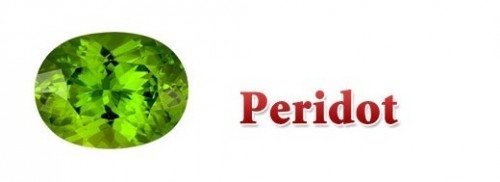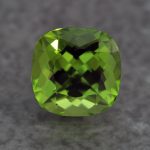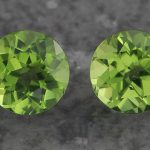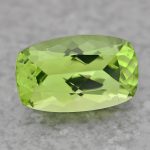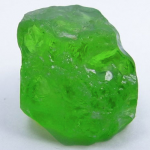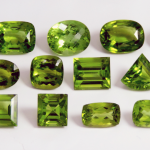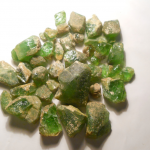Contents
Peridot Information
The name Peridot derived from the word “faridat” that means “poor emerald” in Arabic.
It is the gemstone variety of the mineral Olivine, it is an idiochromatic stone, in fact its color is caused by basic chemical composition of the mineral and is not caused by impurities in the crystals like many other gems, Peridot comes only in one color, a singular green that can vary from a green with some tint of yellow to a more deep and saturated green.
Different color tone and saturation in this stone are caused by impurities presence in the crystal structure like: iron, chromium and nickel.
The most valuable variety of this gemstone is the variety that display a bright deep and strong saturated green color.
It is one of the most ancient stone, used by Egyptians in ancient times, is still popular and loved nowadays. Sometimes it can be called “evening emerald” duo to its characteristic of maintain its shining also under artificial lights.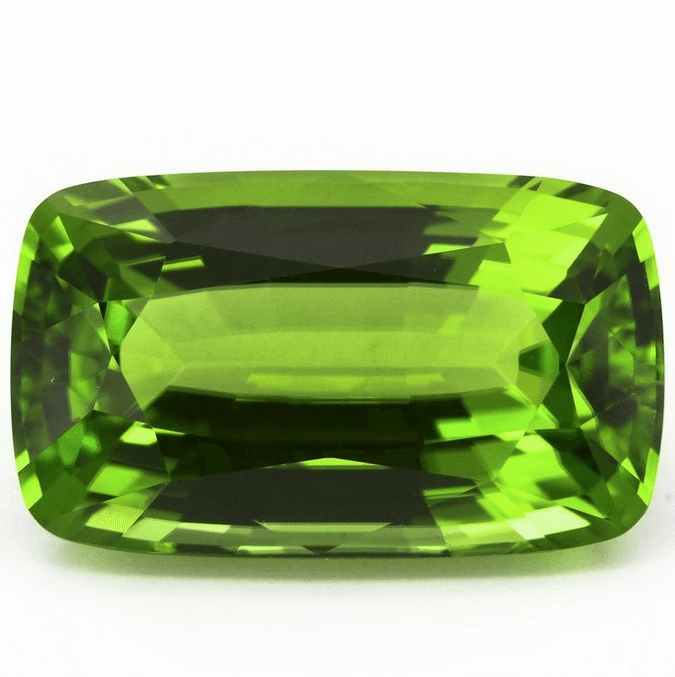
Click here to purchase natural loose Peridot gemstones online
Healing Properties
Considered the gem of the Sun and used in jewelry from ancient times, it was also mentioned in the Bible, someone think that the famous Cleopatra’s emeralds were Peridot stones, this stone was brought back by Crusaders and also used by Romans and europeans to decorate weapons, armors and churches.
Assigned to Saturn planet and August birthstone, Peridot is the leo zodiac sign gemstone and it is considered a good healing stone, protector from negative emotions, may increase confidence and assertiveness, it is a stone for abundance, prosperity and happiness, will help you to improve your health and spirituality.
Treatment
This kind of stone is usually sold untreated, its color is natural and not enhanced, also it has a decent transparency and is not rare to find with eye clean clarity in large size.
Origin and gemstone source
In some rare case it can comes from a meteorite, in small size, but they are really hard to find and never faceted or used in jewelry, the most common Peridot stones comes from igneous environments, they formed deep within the mantle of the earth, and are brought the the surface by volcanic activity.
The best gemstone quality of this mineral family is mined in Burma (Myanmar) but other good quality can also comes from different sources, like: pakistan, Brazil, Africa (Madagascar, Tanzania, Kenya, South Africa), China, Afghanistan, Vietnam, Arizona (United States), Sri Lanka (Ceylon), Australia (Queensland).
Optical Effect
Some beautiful optical effect like asterism and chatoyancy can occur in peridot stones, but unfortunately they are really rare cases.
Images and photos
Click here to purchase Peridot gemstones online
Uses
Since ancient times, Peridot was used in jewelry, so it can be faceted and set into a jewel without big issues, the best quality can decorate high end jewelry.
Heavily included stones are usually shaped and polished into cabochon, a cut also common and popular, cabochon peridot comes usually in large size and they are offered at affordable prices.
Care and Cleaning
Like any other gemstone, Peridot deserve some precaution and attention, especially when cleaned, avoid aggressive chemical products and use only soapy water, it is a relatively soft gemstone so avoid ultrasonic and steam machine, duo to its natural inclusions, it can chip and crack easily.
Take care to prevent scratches on your gemstone, so remember to store it separately from harder stones. Avoid elevate and unexpected temperature change,
Scam and Fraud
It is mined in large and abundant quantity, is usually sold as untreated, so it is considered a safe gemstone to be purchased also from new customers interested in gemology.
Peridot resemble many other gems, like Tourmaline, Apatite, Garnets, Prasiolite (green Quartz) so take care when you are purchasing a gemstone that claimed to be natural. Usually scam seller try to sell Peridot for Emeralds or high valuable stuff.
Some sort of synthetic Peridot are produced but they are expensive and rare.
Click here to buy natural loose Peridot gemstones
Typical Internal Inclusions
Observing this gemstone at microscope can be a really nice initiative, because this kind of stone can reveal some interesting and unique typical inclusions, like: disc-like liquid and gas inclusions, also called lily pads inclusions, or dark, octahedral chromite crystals.
Gemological Info
- Mineral family: Olivine
- Crystal: Orthorhombic
- Density: 3.28 – 3.48
- Hardness: 6.5 – 7 on the Mohs scale
- Refractive index: 1.650 – 1.703
- Color: Green
- Optical effect: None (in very rare case asterism and chatoyancy)
- Luster: Vitreous
- Clarity: Transparent (gem type II)
- Fluorescent: None
- Fracture: Conchoidal
- Cleavage: Poor
- Durability: Medium
Click here to purchase natural loose Peridot gemstones

